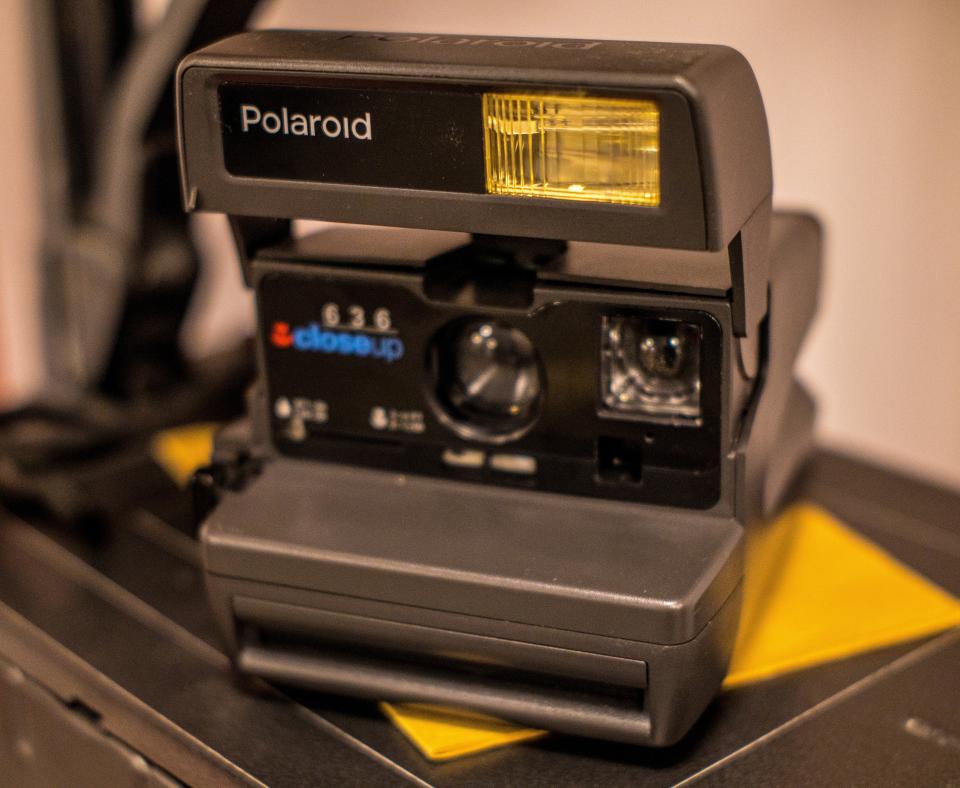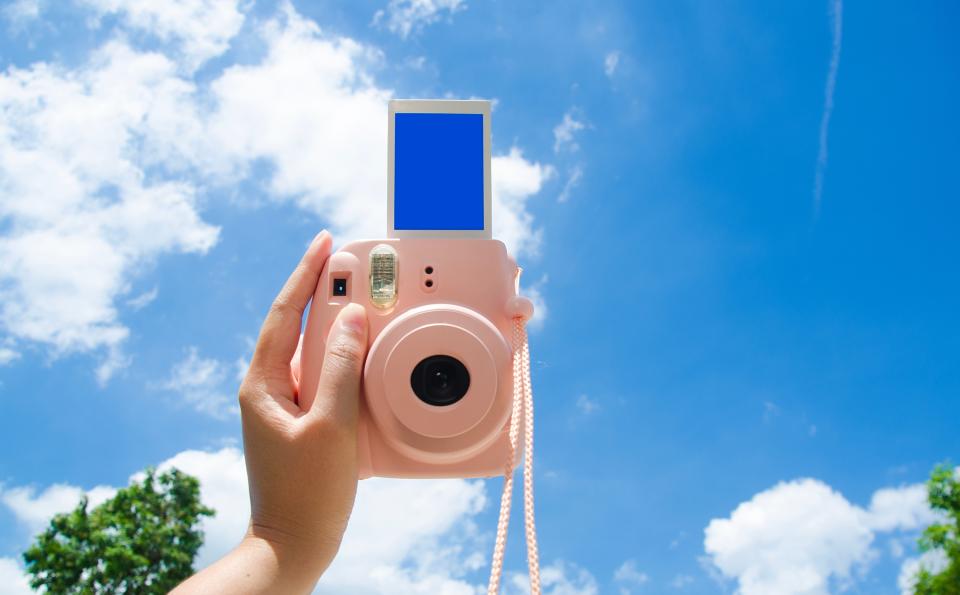The Polaroid Camera Has Made a Comeback — And Yours Could Be Worth $2,000
Long before we all had cell phone cameras in our pockets and could inspect each selfie and digital snapshot in real-time, there was one device that reigned supreme: The Polaroid camera. You'll never forget the sound as you clicked the button on the heavy square metal, the flash popped up and that delightful white sheet of film ground out of the base. Then the real anticipation began. Your image slowly began to appear — maybe with the help of a few shakes — and, voila! almost-instant gratification. While the photo quality wasn't quite as high-definition as we're used to today (we all have those yellowish, blurry square shots, with labels like "Mom's birthday 1976" on the thick white base in a box somewhere), the fun device made taking pictures at social gatherings faster and easier than ever before.
But all good things must come to an end… or do they? After being resigned to the shadows for a couple of decades due to the advent of digital cameras, new generations of the Polaroid camera that provide that same instantly-tangible souvenir of the moment are now trending in a big way. And better yet, if you still have one of the vintage versions in your attic or basement, pull it out, dust it off, and read on — it may be worth big bucks!
Where did the Polaroid camera come from?
The first instant Polaroid camera was created by Polaroid Corporation founder Edwin H. Land back in 1948 — though at that time the instant printing process hadn’t yet been perfected, and required the photographer to time things precisely and use a pod of film-developing chemicals. These prints were sepia-toned, and two years later, in 1950, black-and-white Polaroid film was introduced. Color film for these cameras came in 1963, and in 1972, the Polaroid film you’re likely most familiar with was introduced. Prior to this, the film had been printed with a layer that needed to be peeled off (known as “peel-apart film”) but by the '70s instant film printed in color without any peel-off layer, and prints developed faster than ever before, often taking a minute or less.
During this decade, the Polaroid camera quickly grew in popularity, so much so that instant cameras from other brands were introduced, though these never quite reached Polaroid’s ubiquity. Over 50 years after it first came out, Polaroid still conjures up joy — the excitement of remembering those instant images simply can’t be beat.

What happened to the Polaroid camera?
Sadly, as innovations like home video and later digital photography took off, the Polaroid camera struggled to keep up. In 2008, after years of decline, Polaroid shuttered. You might think that’s the end of the story, but you’d be mistaken. Dr. Florian Kaps, a biologist in Vienna, was determined to save the last Polaroid film factory, and started The Impossible Project, a brand devoted to keeping Polaroid film alive, shortly after. In 2017, as TechCrunch describes it, “the student became the master," as the CEO of The Impossible Project bought the Polaroid brand and intellectual property. Now the impossible has become reality, and Polaroid cameras and film are back.
Why is the Polaroid camera popular again?
Nostalgia played a big role in the Polaroid camera making a comeback, as did a growing boredom with digital photography. While cellphone photos are undeniably convenient, there’s just something special about taking a photo you can actually hold in your hands and have as a keepsake. In the late 2010s, young people who weren’t even around for the golden age of Polaroid began to see the camera’s unique appeal, and like vinyl records, Polaroids enjoyed a renaissance as a hipster must-have that provided a meaningful sense of tactility and a stylish link to the past.
Polaroid cameras have also gotten a makeover to bring them more into the digital world. Today's models often allow users to capture digital images alongside instant prints, have a more compact design, offer higher resolution, better color accuracy for sharper and more vibrant instant prints, and creative features multiple exposure modes, self-timers, built-in filters, and various shooting modes to provide users with a range of artistic options while capturing instant photos. Today, you can even buy the new generation of Polaroid cameras from millennial and Gen Z-savvy retailers like Urban Outfitters.

How much is a vintage Polaroid camera worth?
If you have a Polaroid camera collecting dust in your closet, and happen to have a teen or twenty-something kid, chances are good they’ll want to take it from you (if they haven’t already!). You may also be able to resell your Polaroid for a nice price. On eBay, many vintage Polaroids have asking prices over $1,000, with prices topping out at nearly $7,000. Retrospekt, a site specializing in vintage Polaroids and other old tech, has a guide to cameras they’re looking for and how much they might sell for, and is open to contact from potential sellers. Currently, their most expensive Polaroid is listed at $2,000 — and the camera doesn’t even work properly, as it’s a demo model from the collection of a former employee. This just goes to show how Polaroids can be treated as art objects in and of themselves.
How do I sell my Polaroid camera?
If you’re considering selling your Polaroid, you’ll want to know what model it is. The model name is typically printed somewhere on the camera itself. Photography pro Dan Finnen notes that the majority of Polaroid cameras are worth tens, and not hundreds or thousands of dollars, and says that the most valuable Polaroid model is the Folding SLR Series (on Retrospekt, they sell for $849). These were designed by Polaroid creator Edwin H. Land himself, and debuted in the '70s. The cameras have an innovative design which allows them to fold flat. Today, they’re rare and highly sought after by collectors and photographers. Box-type Polaroids, or cameras that don’t fold, are far more common, and thus less valuable. To learn more about specific types of Polaroid cameras, check out Finnen’s video below.
The Polaroid comeback and vintage Polaroid worth is proof that everything old is new again, and great design never goes out of style. If you’re thinking of selling your Polaroid, there’s a large market of photographers and retro collectors who might be willing to buy it, or you may even be inspired to buy some film and start snapping away with it for the first time in years.

